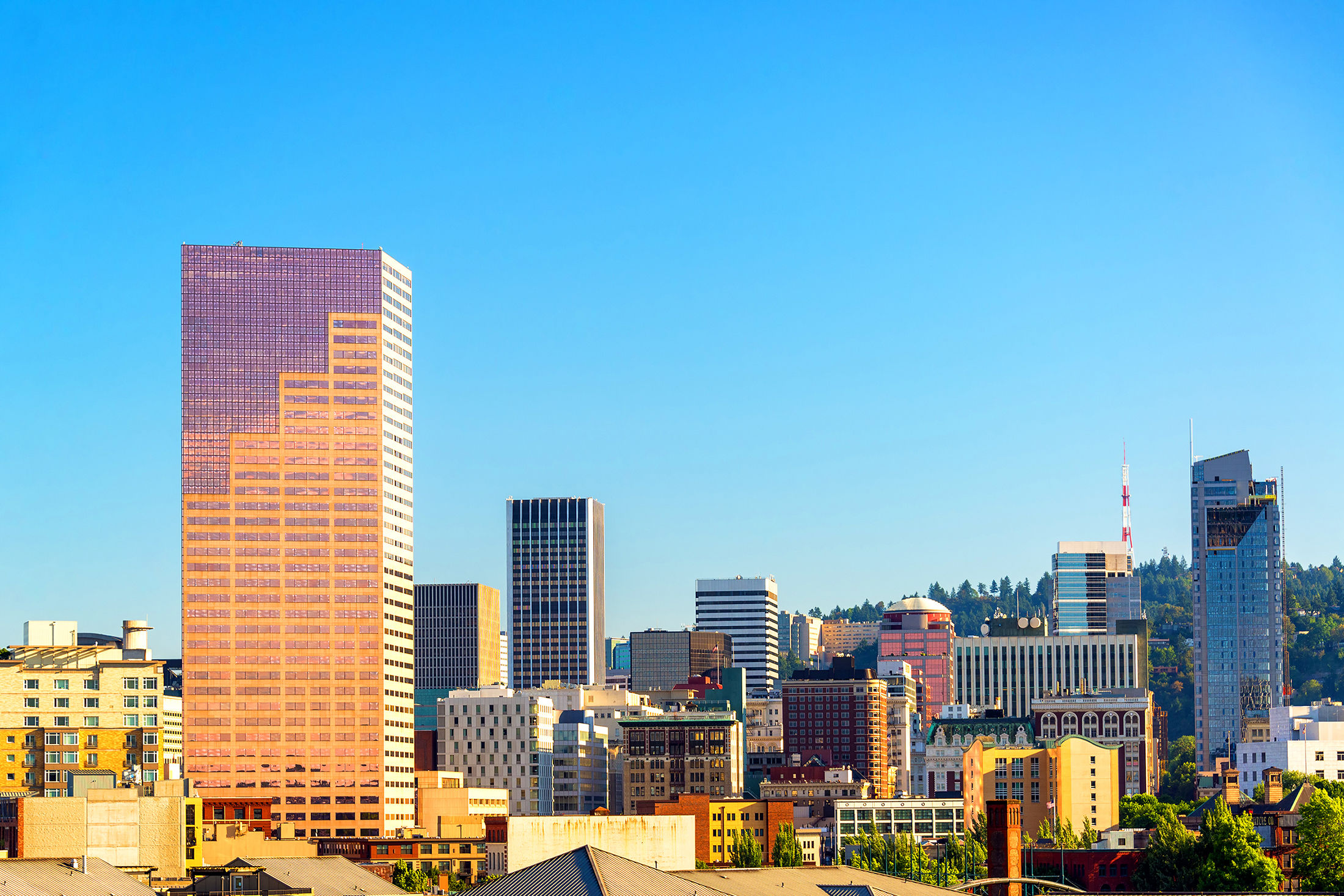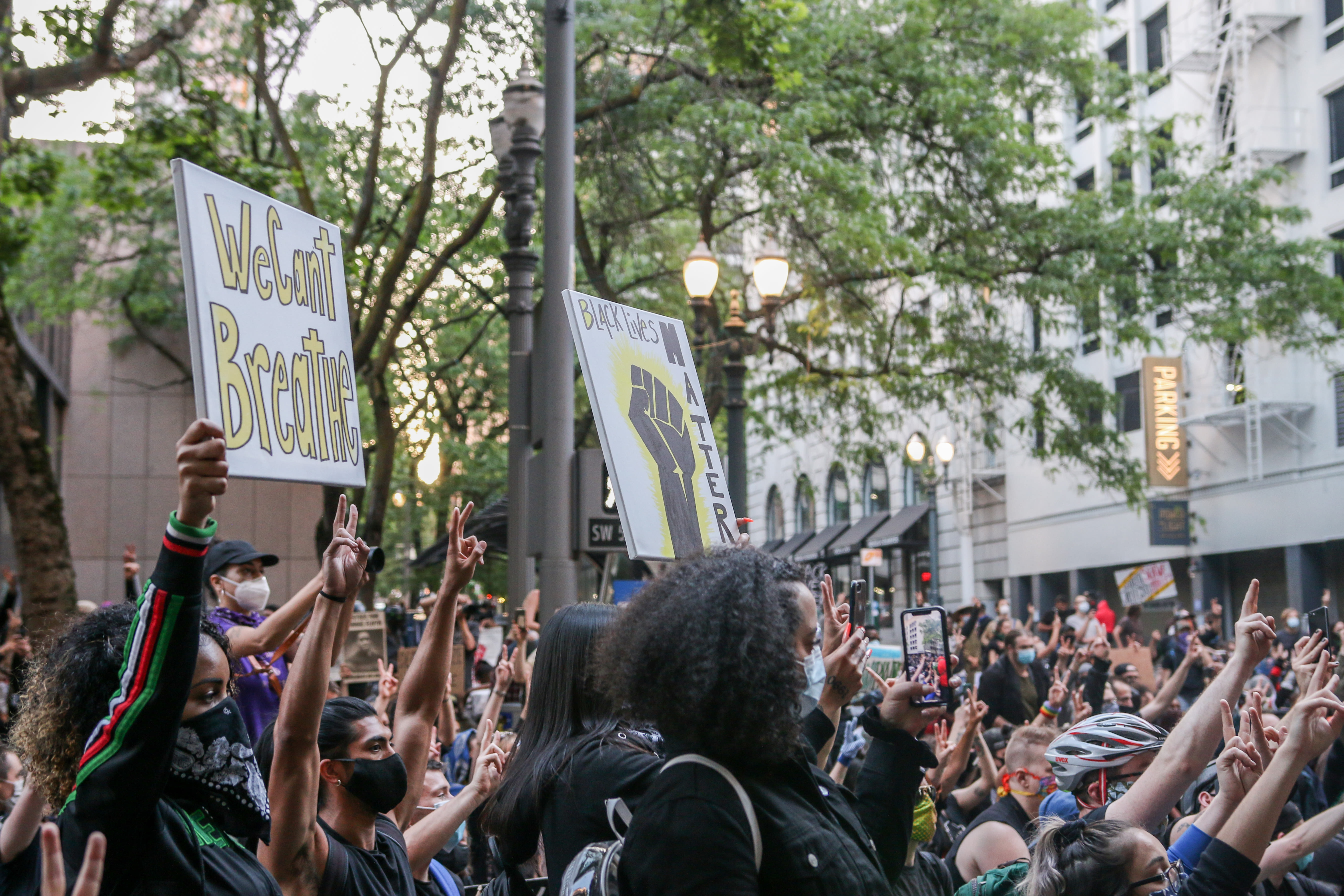
Peace in Portland, if Only for One Night
Early Monday, Gov. Kate Brown said she would send in 50 unarmed members of the Oregon National Guard and 100 Oregon State Police to provide backup and support services to local police who were gearing up for the fourth consecutive day of protests in response to the deaths of George Floyd, David McAtee, Breonna Taylor, and countless other black people killed by law enforcement. Throughout the weekend, each day of peaceful protest led to nights of violence in Portland. But Monday contrasted the weekend with a full night of peaceful demonstration, impactful speeches by those affected by police brutality and violence, and a few breaks for dancing.
In defiance of Mayor Ted Wheeler’s 8 p.m. curfew, extended on Monday morning to last until 6 a.m. Tuesday, some thousand protestors marched across the Burnside Bridge toward downtown. Portland police had blockaded off 16 blocks in the downtown area, but did not interfere with the march, which eventually found its way to Pioneer Courthouse Square. There, the gathering became part educational speech platform, part dance party, with a loud speaker loaded on a truck playing everything from Bob Marley to Pharrell. At around 10:30, the crowd made its way back over the Burnside Bridge for another gathering before peacefully dispersing.
Handfuls of small groups continued to urge people to go to the Justice Center, the site of violence at each of the last three protests.
In was an intentional night, one of solemn reflection, historical trauma, and guided dialogue, one that played out much differently than others around the country. Earlier that evening, President Trump threatened to use military force to “solve the problem” of protests that have occurred nationwide.
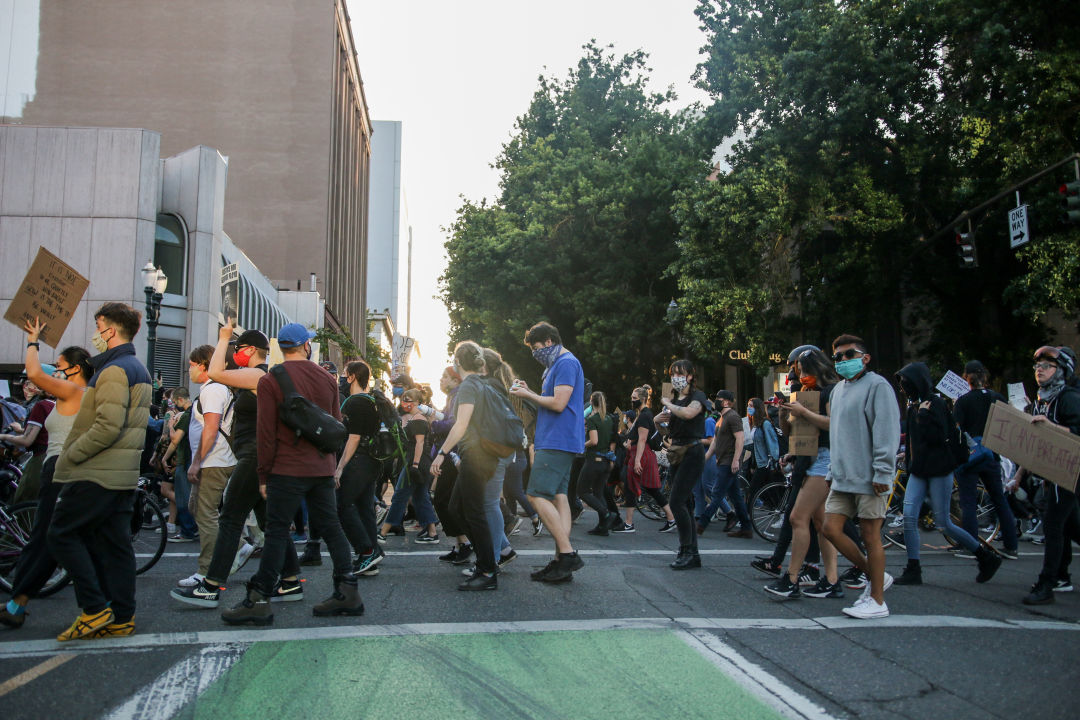
Protesters marched across the Burnside Bridge and through downtown.
Image: Gabriel Granillo
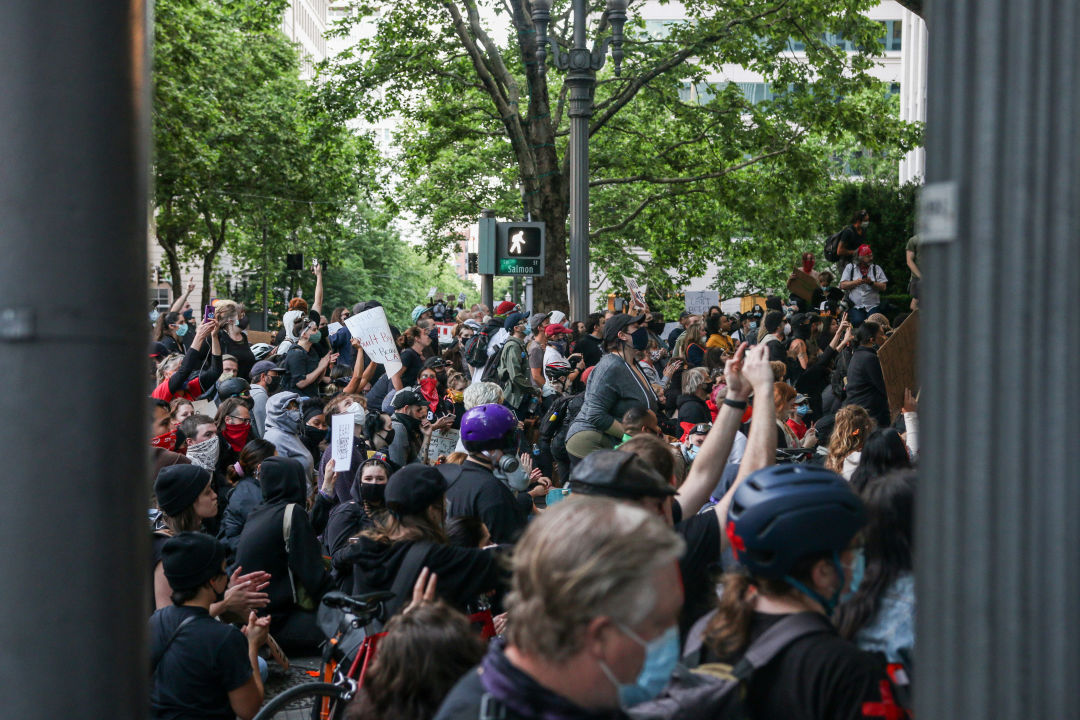
At SW Fifth and Salmon, demonstrators asked to speak with Portland police, who did not interfere with the night’s demonstrations.
Image: Gabriel Granillo
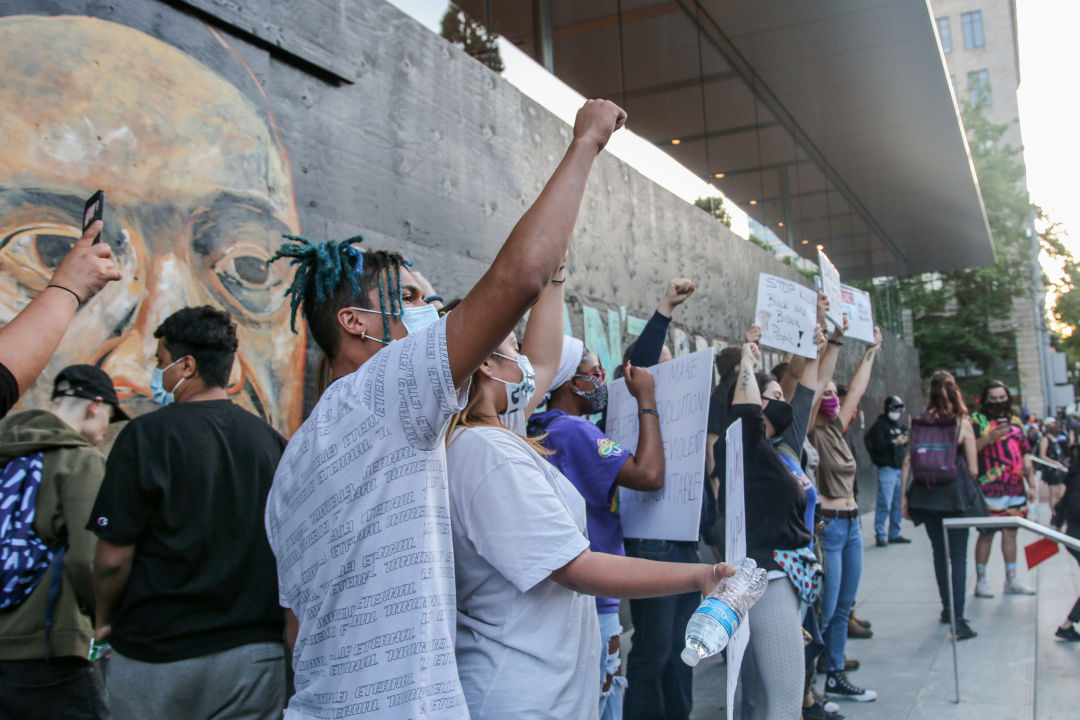
Protesters form around and pose in front of a newly painted mural of George Floyd outside of the downtown Apple Store. On June 1, Floyd’s death was ruled a homicide by Minnesota officials after an independent autopsy.
Image: Gabriel Granillo
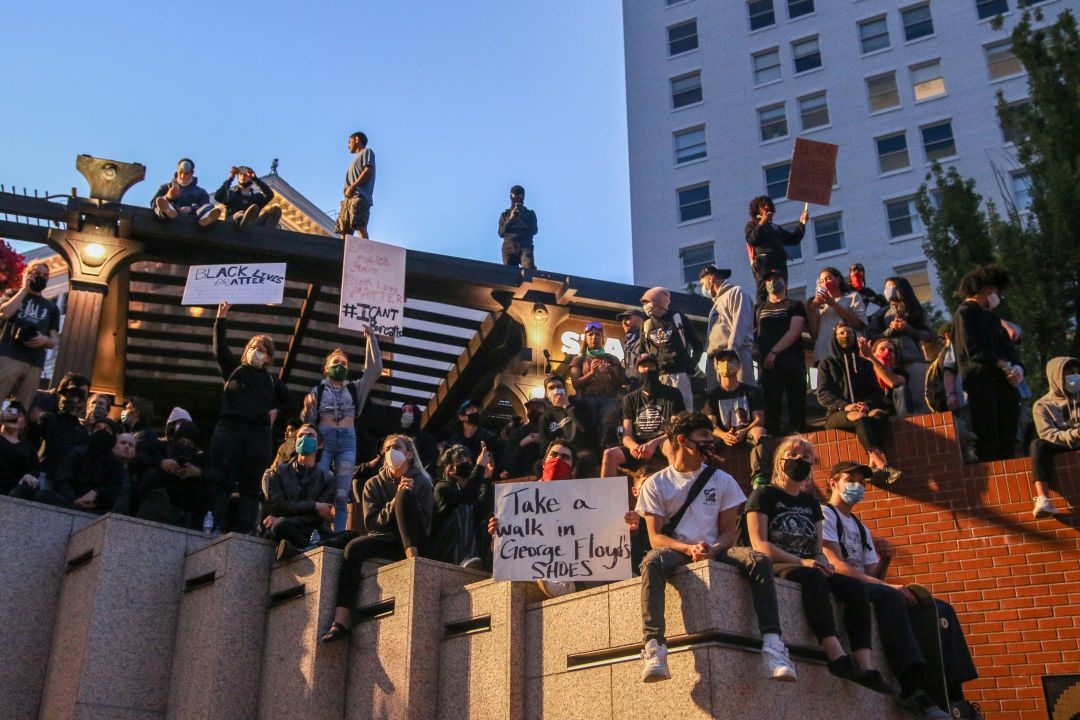
The march moved to Pioneer Courthouse Square, where there were impassioned speeches and intentional dialogue about black justice and police reform.
Image: Gabriel Granillo
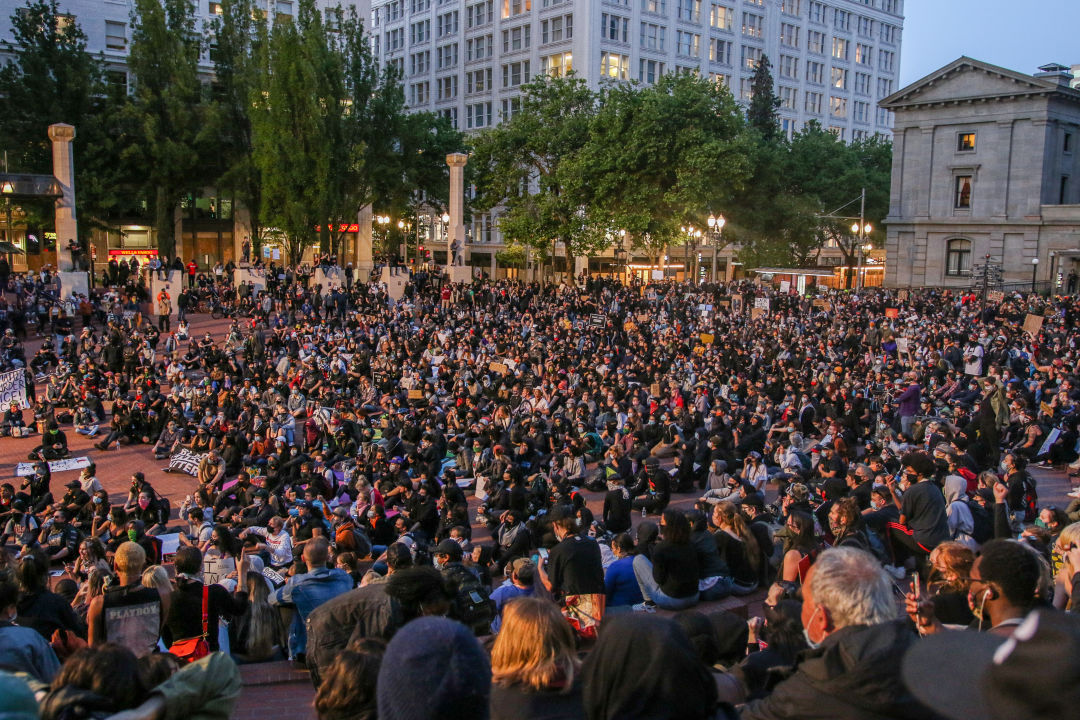
Thousands attended the protest Monday night, filling Pioneer Courthouse Square before the crowd marched back over the Burnside Bridge and went home.
Image: Gabriel Granillo


